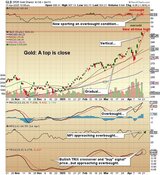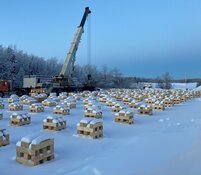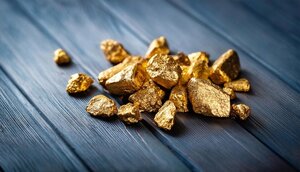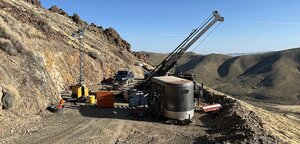The Gold Report: At a recent investor conference in Vancouver you said that the market is at the "bottom" for gold and other metals. Please give us some reasons why this is the bottom.
Gwen Preston: First, the price of gold can't go any lower. The current range of $1,170–1,210 per ounce ($1,170–1,210/oz) represents gold's lower-end price range. That's because all-in sustaining costs for the industry now average about $1,100/oz when you include the interest that major gold producers pay on their debt. There absolutely is demand for physical gold, and the price has to be at least what it costs to produce the metal.
So there is a supply-driven, cost-driven bull market outlook for gold. A gold-driven rally for mining stocks would be OK, but even better would be a rally that's supported by higher prices for a range of metals—and that's what we're looking at. A good number of metals will have supply constraints over the near to medium term, which should result in gains in value. That list includes zinc, platinum, nickel, uranium and diamonds. It's not just gold that's going to go up.
Then there's the fact that the sector is so reliably cyclical. Investors are moving in and deals are being made. You can see it in things like the volume in the Market Vectors Gold Miners ETF (GDX:NYSE.Arca) or the Market Vectors Junior Gold Miners ETF (GDXJ:NYSE.Arca). You can see it in the merger and acquisition (M&A) activity and in the new vehicles being established for experienced mining management teams, whether it's a small producer buying a bankrupt gold mine because it's available for such a ridiculously low price or it's China buying hard assets. These things happen at the bottom of the cycle.
TGR: The Market Vectors Junior Gold Miners ETF has certainly been trending higher this year but how does it accurately represent the junior mining companies that are developing or exploring assets but not yet producing?
GP: The Market Vectors Junior Gold Miners ETF doesn't really represent explorers or developers, but that doesn't mean it isn't useful. When our sector as a whole turns from a bear to a bull market it will not all go up at the same time. First, the producers will move as metal prices start to climb and producers provide leverage to those metal prices. Then the developers and explorers will start to move. It's a staged process. If you look at the major producers, as represented by the Market Vectors Gold Miners ETF, it's been trending upward for six months. The junior producers, as represented by the Market Vectors Junior Gold Miners ETF, have been trending upward for about six weeks. The developers and explorers are still primarily moving sideways, with some gaining and some losing but with many lining up in a heartening manner.
TGR: The time-tested adage is that mining investors sell their positions in May and go away from the market until late August or September. Is there evidence that investors sold their mining shares en masse over the previous six weeks?
GP: No, certainly not in the same way that has so often happened in May. It's amazing how reliable that sell-in-May-and-go-away adage is, even in bull markets such as those that occurred in 2004–2007. Even in those bullish years, the summers were down. But that phenomenon hasn't happened yet in 2015; so far we're moving sideways.
"Pilot Gold Inc. is quite significantly undervalued."
One thing to watch is whether or not the TSX Venture Exchange makes gains this summer. Over the last 25 years, there were only four years when the Venture Exchange gained during the summer. Those were all years where the market was changing from bear to bull. It gained in 1993 and in 1995 when there were runs coming. It gained in 2003, which set up a big run. And it gained in 2009, which set up that recovery run. I don't know if it's going to happen but if it starts to happen, buckle your seat belts.
TGR: How should investors play this space over the summer months?
GP: You need a big picture perspective. Right now is the time to establish positions in the best of the best. As I said, I don't know if the rally will start this summer but in a sense it doesn't matter. What matters is that we are at the bottom. Investors need to figure out which companies truly represent the best of the best and take advantage of the fact that we're looking at the lowest valuations in the mining sector in 20 years. Investors should establish a quality portfolio of everything from explorers to developers to producers and then try not to worry if prices slide a little because, broadly speaking, this is the bottom. If we start to see the Venture Exchange gaining over the summer months all that will mean is that the rally is coming sooner, so there will be a bit more pressure on establishing those positions more quickly.
TGR: The S&P TSX Venture Composite Index is at about 700. Do you think it will be above 1,000 by the time we see 2016?
GP: Above 1,000 might be a bit optimistic. Again, I don't know when the rally will come, just that it will come eventually. There are many macro forces that are having an impact on this rally, the dominant ones being the U.S. dollar and U.S. markets. If the U.S. markets turn down, that would move investors out of those markets and into new places. That search would quickly turn up mining stocks as the most undervalued assets. But the timing of a rally is difficult to predict.
TGR: You tell readers to take money off the table once they have made some gains. How do you determine the timing?
GP: The mining sector is a roller coaster and stocks do crazy things. My rule, at least while we are bouncing along the bottom, is that once your investment is up 25%, take some money off the table. Generally that recommendation range is from selling a quarter to a half of your position. It depends on the specifics of the equity and the situation. By doing that, you can significantly lower your cost base, which means your potential for gains is just that much greater. That money that you have taken off the table is then available to redeploy if there's another opportunity. It's important to have the flexibility to move into new opportunities. There are lots of good opportunities out there right now.
TGR: You also told investors to take some money off the table because a particular company was just about to embark on a capital spending program. Do stocks typically decline in value when capital programs are underway?
GP: In that instance I was writing about Caledonia Mining Corp. (CAL:TSX; CMCL:AIM; CALVF:OTCQX), where a combination of factors are at play. Caledonia operates a gold mine in Zimbabwe called the Blanket mine, a joint venture with its black economic empowerment partner. Caledonia is embarking on a fairly significant capital-spending program to extend the mine life at Blanket another 15 years. Even though it's a good idea to spend money to increase mine life, the market doesn't always reward that. It's money going out, and share prices rarely respond favorably to that. More generally, I recommended selling some of Caledonia because we were up 25% in a bottom-bouncing scenario. With Caledonia we specifically lowered our cost base to $0.46 per share. Caledonia is trading at $0.98. Selling some shares is not about getting out of a stock because I think it's going down; it's because I still very much like the story, but I'd rather be in the stock at $0.46 than at $0.68.
TGR: You were a part of the recent Metals Forum in Vancouver where you and three other newsletter writers, namely John Kaiser, Eric Coffin and Brien Lundin, hosted a conference for subscribers. You provided that audience with two of your top picks. Could you share them with us?
GP: One of those top picks was Kaminak Gold Corp. (KAM:TSX.V). The company is advancing its Coffee gold project in the Yukon toward a feasibility study that's due out Q1/16. I've been to the Coffee project several times and know the technical and management teams. I understand the plan. This is a project and a company that ticks all of the boxes. It has a 4 million ounce (4 Moz) gold resource that's contained in near-surface oxidized deposits that would fit well into coherent open pits and are easy to mine. It's also easy to get the gold out of that rock by dump-leach gold extraction. Recent testing by Kaminak shows that it barely needs to grind the ore, which reduces its mining costs because it would not use as much power in the mill.
The gentle rolling hills at Coffee provide straightforward engineering and development options for building a mine. Kaminak is focused on getting a mine into production but there's still a lot of exploration potential in the area. Given the state of the market, Kaminak management realized that it made more sense to pin some economics onto the project rather than adding ounces. But it should be able to easily add ounces as well, down the road.
TGR: Is there a risk that Kaminak gets taken out before it fully realizes its potential?
GP: Absolutely. I'd say that that's a common concern among the CEOs of companies with minable advanced assets. They don't want takeover bids yet because they know their assets are worth more than their share price represents. They're trying to boost that share price as quickly as possible.
TGR: What was the other pick?
GP: Pilot Gold Inc. (PLG:TSX). Pilot is part of the Oxygen Capital Group. This is the management team that was at Fronteer Gold when that company was taken out by Newmont Mining Corp. (NEM:NYSE) for about $2.3 billion ($2.3B). This is a technical team that based its initial success on a geological concept in Nevada that proved to be incredibly accurate. Now that team is attempting to replicate that model at a new project in Nevada called Kinsley Mountain. Pilot is finding gold in stratigraphic horizons that others thought were barren. It's not just gold—it's high-grade gold in Nevada. There's no resource estimate yet but the company is doing a lot of drilling.
Pilot also has two projects in Turkey, which is a fantastic mining jurisdiction. They're both joint ventured with Teck Resources Ltd. (TCK:TSX; TCK:NYSE). Pilot owns 60% of TV Tower, an early-stage project with three large copper-gold porphyries, as well as some silver. Pilot's other project is Halilağa, which has a preliminary economic assessment with some solid numbers. Pilot and Teck are shopping that project and it could put some cash in the bank. If they can't find a buyer now, they'll find a buyer later.
TGR: Pilot is undertaking an exploration program on the Kinsley Mountain and Goldstrike properties as part of an effort to find the downward extension of the high-grade mineralization there. If Pilot hits it in a big way, do you see Pilot spinning out its assets in Turkey?
GP: I've chatted with management and Pilot realizes that it's difficult for the market to ascribe full value to all of a junior company's assets. So, yes, if Pilot has good success in Nevada this year there's definitely the possibility that Pilot would turn into two companies. That's certainly not a downside for investors. That would mean that you would have two cards to play.
TGR: Is that a fair price at $0.70 per share?
GP: No. Pilot Gold is worth more than $0.70 right now. It's somewhat difficult to pin numbers to Pilot because it does not have a resource defined at Kinsley Mountain or a fully defined resource at TV Tower. But in my opinion it's quite significantly undervalued.
TGR: Your subscriber-based newsletter, Resource Maven, just put out three "fresh" recommendations. Could you share at least one of those with us?
GP: Just to set the scene, I recommended a large gold producer, one mid-tier gold producer and one small gold producer that's undergoing a transition designed to position it for today's market. The last one is Crocodile Gold Corp. (CRK:TSX; CROCF:OTCQX), which is currently undergoing a merger with Newmarket Gold. Crocodile is an Australian gold producer with three assets in Australia that produce a total of 200,000 ounces (200 Koz) gold per year at a good profit. Newmarket, on the other hand, is a shell with no assets. However, Newmarket brings people with lots of expertise. The Newmarket board of directors includes Doug Forester and Blayne Johnson who cofounded Terrane Metals, which was acquired by Thompson Creek for $750 million ($750M). They were also involved in Potash One and a list of other Canadian mining successes including Mt. Milligan and Kemess South. They have raised immense amounts of money over decades. The board also includes Lukas Lundin and Randall Oliphant, the former president of Barrick Gold Corp. (ABX:TSX; ABX:NYSE). Oliphant is currently the chairman of New Gold Inc. (NGD:TSX; NGD:NYSE.MKT) and the World Gold Council. And there is Ray Threlkeld, who led Rainy River Resources into a takeover by New Gold and put more than 30 Moz gold into production during his time with Barrick.
This is a significant group of people who want a vehicle to drive through the rally and that vehicle is Crocodile. It used to be a high-cost gold producer. In the last 18 months new management has successfully brought down production costs. The 200 Koz gold that Crocodile produces will be the starting point. These guys are raising $25M, with at least $8M coming from management. They're going to find distressed, undervalued assets. You have to put faith in their due diligence and experience. There's a lot of potential here.
TGR: Are they trying get to Crocodile to the size of an Agnico Eagle Mines Ltd. (AEM:TSX; AEM:NYSE)?
GP: Yes, somewhere around 500 Koz annually and grow from there. It will depend of course on the markets and what assets they can acquire, but that's what they're looking to do.
TGR: What are some other companies in the Resource Maven portfolio?
GP: I mentioned Caledonia. It's a classic mining story: The Blanket mine was once owned by a major but it didn't get enough attention so the costs climbed. Caledonia bought it, found the necessary economic empowerment partner, which is what you need in Zimbabwe, and turned the mine around. Blanket's all-in sustaining costs are now $950/oz. An expansion is under way, and the market is recognizing the value. The stock has gained 27% over the last month.
Moving down to the developers, I have Dalradian Resources Inc. (DNA:TSX) in the portfolio. Dalradian is advancing the Curraghinalt high-grade gold project in Northern Ireland. This is a jurisdiction that understands mining and wants jobs. Dalradian CEO Patrick F. N. Anderson is a co-founder of Aurelian Resources, which was bought by Kinross Gold Corp. (K:TSX; KGC:NYSE) for almost $1B in 2008. Dalradian's share price has performed nicely. The company has the money it needs to take the next essential step, which is to develop an underground exploration adit. Dalradian needs to do underground drilling and take a bulk sample. It is already blasting and there should be a lot of news coming from all of that work. Advancement is what you need for a stock to get rerated. Basically, this company has it all.
TGR: The stock is up about 24% year-to-date, and roughly nine analysts cover Dalradian, with most of them rating it as a "Buy." How did such a small company get such a following?
GP: One reason is the state of the market. After four very difficult bear market years, there aren't many companies with high-quality assets that are continuing to advance rapidly. That puts Dalradian in a select group.
Also, you have to credit management with effectively telling the story of a great asset. Curraghinalt has straightforward metallurgy and straightforward engineering in a fantastic jurisdiction. Those characteristics have become increasingly important as we've advanced through this bear market.
TGR: Please continue with the next company on your list.
GP: Moving from developer to explorer, I'll bring up Rockhaven Resources Ltd. (RK:TSX.V). Rockhaven is advancing Klaza, a road-accessible gold project in the Yukon. Rockhaven came out of Archer Cathro, a metals consultant that's been exploring in the Yukon for decades. Klaza is one of its discoveries. This is a high-grade gold deposit in steeply dipping veins. Earlier this year Rockhaven announced an initial NI-43-101-compliant resource of about 1 Moz grading at 4.2 grams per tonne (4.2 g/t) gold and 96 g/t silver—good grades in a structure that should be easy to mine underground.
What's really exciting about Klaza is its potential. There are geological reasons to believe that Klaza is a carbonate base metal epithermal gold deposit, or a CBM gold deposit. Other CBM deposits have been mined down to a kilometer below surface. The current resource goes down to 300 meters so that really amps up the size potential. Last year, Rockhaven stepped back and did one deep hole that hit gold. This year the company is going to go deeper to test the deposit at depth.
TGR: Any others?
GP: Peruvian ore processors continue to advance in this market. Inca One Gold Corp. (IO:TSX.V) is one such outfit. Peru has a huge number of small-scale gold miners who for years sent their ore to toll-milling operations. It was a $2B industry before the Peruvian government decided that it needed to clean up the environmental damage caused by those unregulated mills. It also wanted to collect taxes on the mined gold.
The government introduced laws requiring mills to meet environmental standards and requiring miners to register. That created an opportunity for companies with access to capital to buy mills from existing operators who did not have the ability to upgrade their mills to meet the new environmental requirements. Inca One seized the opportunity. It now owns the Chala One mill, which is ramping up to 100 tons per day. The toll-milling business model gets a company into cash flow very quickly. There's a rush of companies that are attempting to do the same thing but Inca One was one of the first, so that gives it an advantage.
TGR: Are there any companies that are not in your portfolio but you think that could be worth mentioning?
GP: There are many but one story that I follow is Precipitate Gold Corp. (PRG:TSX.V). I chatted with Precipitate President and CEO Jeff Wilson yesterday. The company is advancing its Ginger Ridge discovery in the Dominican Republic. It essentially has one drill hole into this discovery, which was on the edge of a geophysical anomaly. Precipitate ran more geophysics and the expanded anomaly looks really promising but Precipitate is being hindered by the market. It's really hard for an exploration-stage company to raise money. However, just as important as drilling that geophysical anomaly is the ability of management to understand the situation and figure out the best way forward. And in this case I think that will involve taking a step back and looking around to find more targets. Ginger Ridge as a property is underexplored and the entire Tireo Gold Belt in the Dominican Republic, where it's located, is as well.
One of Precipitate's strengths is that it still has a tight share structure and I know Jeff doesn't want to mess with that, so the company is waiting until the markets are a little better and it can raise money without compromising its share structure so much. I think Precipitate will use this time to increase its odds of drilling success by delineating more targets. It's a prudent manner to preserve shareholder value.
TGR: GoldQuest Mining Corp. (GQC:TSX.V) is next door on the Tireo Belt, and it recently put out a new study with much more robust numbers in a smaller operation. The market has responded positively. Is Precipitate's success inextricably linked to that of GoldQuest?
GP: Yes and no. Any success GoldQuest has will help but it hasn't helped yet. Right now area plays don't matter because the market often dismisses even fantastic drill holes. When the market starts to strengthen, area plays will matter once again, and as GoldQuest advances Precipitate will get a lift from that.
TGR: Could you leave us with one last tidbit of market intelligence that investors could use?
GP: Be demanding. There are still many companies out there telling interesting stories about their projects, but what we're looking at right now is arguably an unparalleled opportunity to establish a high-quality portfolio of mining assets to ride a significant market rally. Be demanding in the equities that make it into your portfolio. Come up with a list of requirements that you need and only buy equities that meet all of those requirements because they are out there. It takes research. It takes time, but be demanding and only buy the best because they will rise faster and farther.
TGR: Thank you for talking with us today, Gwen.
With almost a decade of junior resource-focused journalism under her belt, Gwen Preston launched Resource Maven. Preston watches the wires, talks to her network and analyzes economics to identify resource news that matters and figures out how to profit. She focuses on early-stage exploration and development stories. Preston has been interviewed on CBC and in the Financial Post.
Read what other experts are saying about:
Want to read more Gold Report interviews like this? Sign up for our free e-newsletter, and you'll learn when new articles have been published. To see a list of recent interviews with industry analysts and commentators, visit our Streetwise Interviews page.
DISCLOSURE:
1) Brian Sylvester conducted this interview for Streetwise Reports LLC, publisher of The Gold Report, The Energy Report and The Life Sciences Report, and provides services to Streetwise Reports as an independent contractor. He owns, or his family owns, shares of the following companies mentioned in this interview: None.
2) The following companies mentioned in the interview are sponsors of Streetwise Reports: Pilot Gold Inc. The companies mentioned in this interview were not involved in any aspect of the interview preparation or post-interview editing so the expert could speak independently about the sector. Streetwise Reports does not accept stock in exchange for its services.
3) Gwen Preston: I own, or my family owns, shares of the following companies mentioned in this interview: Caledonia Mining Corp., Kaminak Gold Corp., Pilot Gold Inc., Crocodile Gold Corp., Dalradian Resources Inc., Rockhaven Resources Ltd. and Inca One Gold Corp. I personally am, or my family is, paid by the following companies mentioned in this interview: None. My company has a financial relationship with the following companies mentioned in this interview: None. I was not paid by Streetwise Reports for participating in this interview. Comments and opinions expressed are my own comments and opinions. I determined and had final say over which companies would be included in the interview based on my research, understanding of the sector and interview theme. I had the opportunity to review the interview for accuracy as of the date of the interview and am responsible for the content of the interview.
4) Interviews are edited for clarity. Streetwise Reports does not make editorial comments or change experts' statements without their consent.
5) The interview does not constitute investment advice. Each reader is encouraged to consult with his or her individual financial professional and any action a reader takes as a result of information presented here is his or her own responsibility. By opening this page, each reader accepts and agrees to Streetwise Reports' terms of use and full legal disclaimer.
6) From time to time, Streetwise Reports LLC and its directors, officers, employees or members of their families, as well as persons interviewed for articles and interviews on the site, may have a long or short position in securities mentioned. Directors, officers, employees or members of their families are prohibited from making purchases and/or sales of those securities in the open market or otherwise during the up-to-four-week interval from the time of the interview until after it publishes.









































